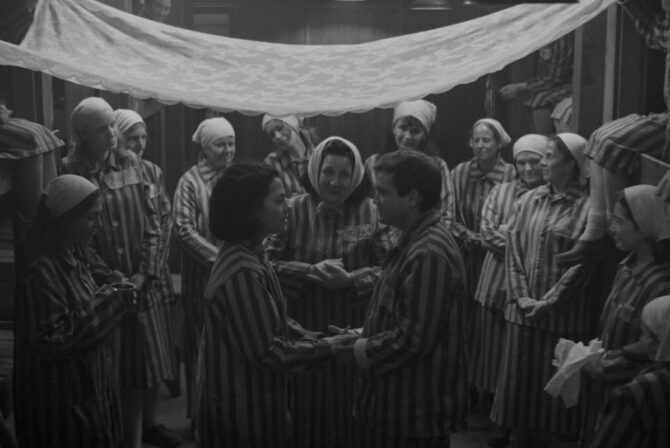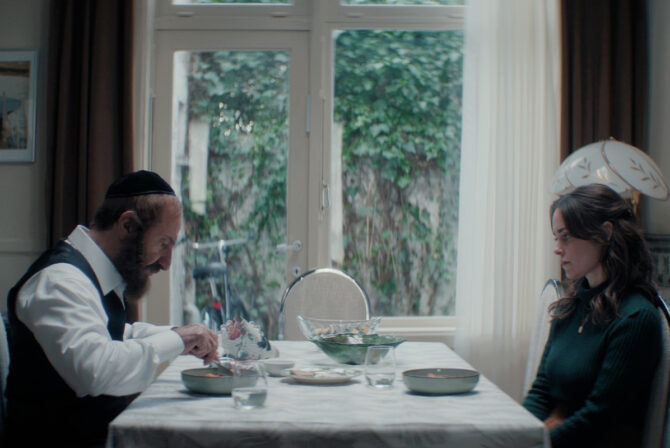When my husband and I started planning our wedding, there were few things we could agree on about our big day. Where I wanted sunflowers, he wanted roses. Where I wanted vanilla cake, he wanted chocolate (OK, we still don’t agree about this). The one thing we were both clear on was that we wanted to create a Jewish home and to raise our future children to embrace Jewish values. At our officiant’s urging, we read “The New Jewish Wedding” by Anita Diamant, spoke in hypotheticals, and made grand plans about what having a Jewish home would look like for us.
Fast forward to nearly eight years, three kids, and a house in the suburbs later, and we are still establishing the reality of what that Jewish home should be and how those Jewish values get introduced. While this former vegetarian turned poultry eater can make a killer brisket without ever tasting it and can bake a babka to put a New York deli to shame, I don’t know how to take the seemingly daunting idea of creating a Jewish life for our family beyond celebrating traditions and cooking foods related to mainstream Jewish holidays.
This is partly due to me and my husband’s inability, or maybe hesitancy, to choose the “right” Jewish path for our family. Where my husband grew up attending a Conservative synagogue, my formal Jewish education comes from childhood summers and the better part of my professional career spent at an incredible Jewish summer camp. So the idea of how to introduce a formal Jewish education to our kids is an overwhelming choice for us, and one that we continue to procrastinate making.
Still, when opportunities present themselves, we try to take advantage. On a whim a few months ago, I showed my oldest daughter, then 5, an episode of BimBam’s Shaboom!, a cartoon web series I’d heard about from a friend that introduces Jewish values through relatable and fun fictional stories.
At the time I was curious about it and my daughter was thrilled to get a little extra screen time, so we snuggled in front of my laptop and gave it a shot. Instantly, she was hooked. Over the last few months, we’ve continued to watch episodes snuggled up on the couch. Hours later I’ll hear her singing a song from an episode to herself or incorporating an exclamation of “shaboom!” into her imaginative play with her countless dolls and figurines.
However, what she actually picks up from Shaboom! is much deeper than that. Usually in the days and sometimes even weeks following our viewing of the latest episode, my daughter will reference something she learned from our favorite web series without realizing that’s what she is doing. For example, whenever a house guest comes to stay with us, she is determined to make sure they are as comfortable as possible, thanks to the very first Shaboom! episode. She makes them a welcome sign, shows them their room, and promptly tells them that she intends to wake them up in the morning to “start their day off right.” (Welcoming is all relative, I suppose, and this is her interpretation.) She talks often and sometimes at length about giving toys, books, food, and money to people less fortunate than us, and while she still struggles to say the word “tzedakah” (which is the cutest thing ever) she completely embraces the concept thanks to a powerful viewing and follow up discussion we had about it.
Then today, I picked her up from her morning kindergarten class and asked me, “Mommy, what do you call it in Hebrew when your friends don’t want to play with you and you have to play with new friends?” After a little prodding, a few more questions, and a long look into her deep puppy dog brown eyes, I figured out that what she was struggling to make sense of what had happened with her normal playmates and was looking for was a value or lesson that would make today’s playground antics easier to stomach. She wanted the Jewish equivalent of “make new friends but keep the old” and I didn’t have that concept easily accessible in my limited knowledge of Hebrew and Jewish values.
So, as soon as her sisters went down for their afternoon naps, we broke out the computer and watched a couple Shaboom! episodes to help her navigate these new experiences and emotions she was feeling. Through watching and discussing the values of kavod (respect), ometz lev (courage of the heart), and shalom bayit (peace in the home), she started to have a Jewish context within which she could direct her feelings. “I’m just going to walk up to my friends tomorrow and I’ll tell them to show me more respect because we need peace in our kindergarten house,” she exclaimed at the end of our conversation. If that’s not a parenting win, I don’t know what is! And, I can’t wait to see how that one goes over on the playground.
As we kick off this sweet New Year, I know that the path ahead for our family to find our Jewish journey is still being developed. We aren’t sure which direction we’ll take and where we’ll end up. But one thing is certain—we will take all the help we can get when it comes to teaching Jewish values.
Read More:
Bracing Myself Against My Son’s Severe Mental Illness
Why I Don’t Want My Children to Grow Up in a Safe Space
Orthodox Women Take On ‘Vagina Monologues’ & Make it Their Own







